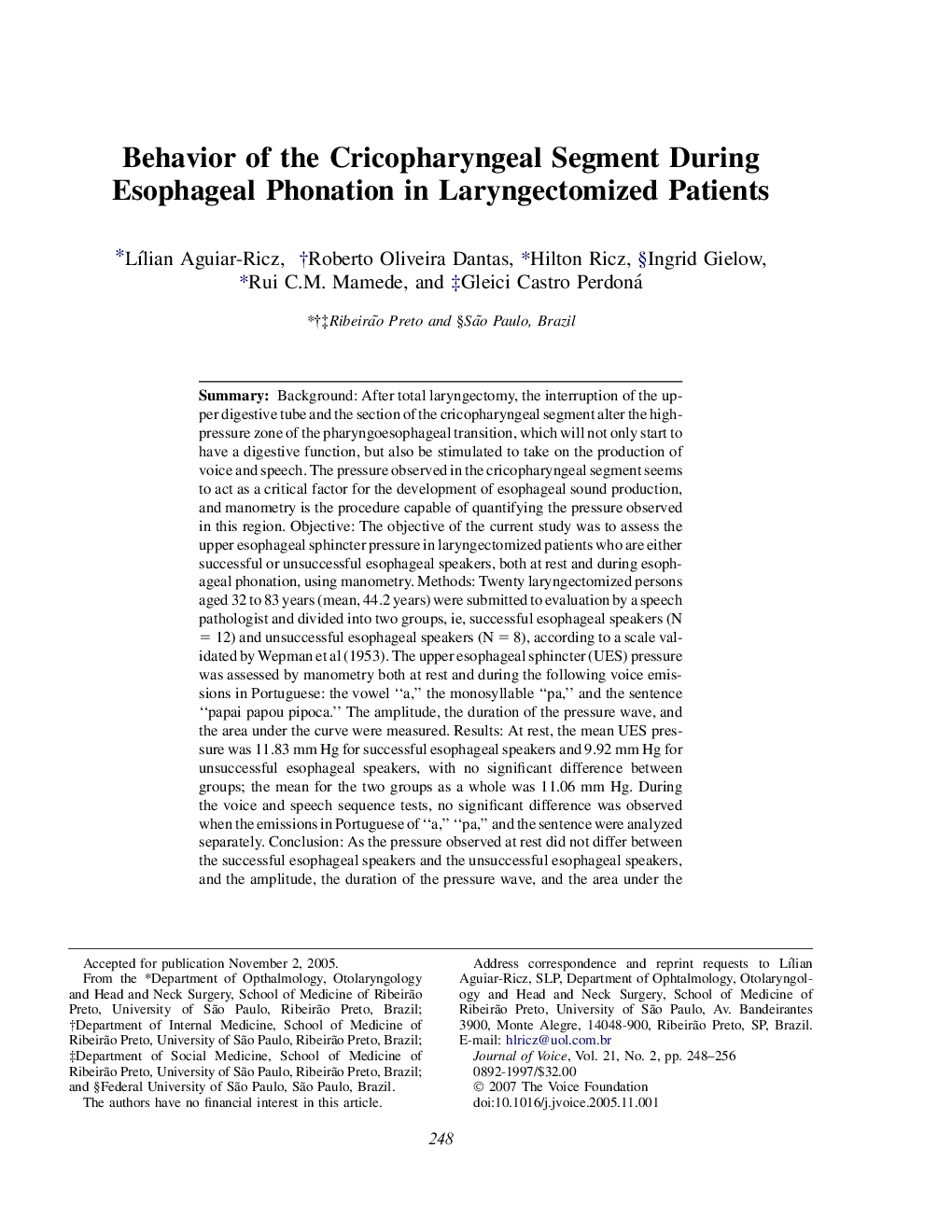| کد مقاله | کد نشریه | سال انتشار | مقاله انگلیسی | نسخه تمام متن |
|---|---|---|---|---|
| 1102480 | 953603 | 2007 | 9 صفحه PDF | دانلود رایگان |

SummaryBackground: After total laryngectomy, the interruption of the upper digestive tube and the section of the cricopharyngeal segment alter the high-pressure zone of the pharyngoesophageal transition, which will not only start to have a digestive function, but also be stimulated to take on the production of voice and speech. The pressure observed in the cricopharyngeal segment seems to act as a critical factor for the development of esophageal sound production, and manometry is the procedure capable of quantifying the pressure observed in this region. Objective: The objective of the current study was to assess the upper esophageal sphincter pressure in laryngectomized patients who are either successful or unsuccessful esophageal speakers, both at rest and during esophageal phonation, using manometry. Methods: Twenty laryngectomized persons aged 32 to 83 years (mean, 44.2 years) were submitted to evaluation by a speech pathologist and divided into two groups, ie, successful esophageal speakers (N = 12) and unsuccessful esophageal speakers (N = 8), according to a scale validated by Wepman et al (1953). The upper esophageal sphincter (UES) pressure was assessed by manometry both at rest and during the following voice emissions in Portuguese: the vowel “a,” the monosyllable “pa,” and the sentence “papai papou pipoca.” The amplitude, the duration of the pressure wave, and the area under the curve were measured. Results: At rest, the mean UES pressure was 11.83 mm Hg for successful esophageal speakers and 9.92 mm Hg for unsuccessful esophageal speakers, with no significant difference between groups; the mean for the two groups as a whole was 11.06 mm Hg. During the voice and speech sequence tests, no significant difference was observed when the emissions in Portuguese of “a,” “pa,” and the sentence were analyzed separately. Conclusion: As the pressure observed at rest did not differ between the successful esophageal speakers and the unsuccessful esophageal speakers, and the amplitude, the duration of the pressure wave, and the area under the amplitude x duration curve were also equal for both groups, we conclude that the cricopharyngeal segment pressure is not a preponderant factor for the acquisition of esophageal voice and speech.
Journal: Journal of Voice - Volume 21, Issue 2, March 2007, Pages 248–256